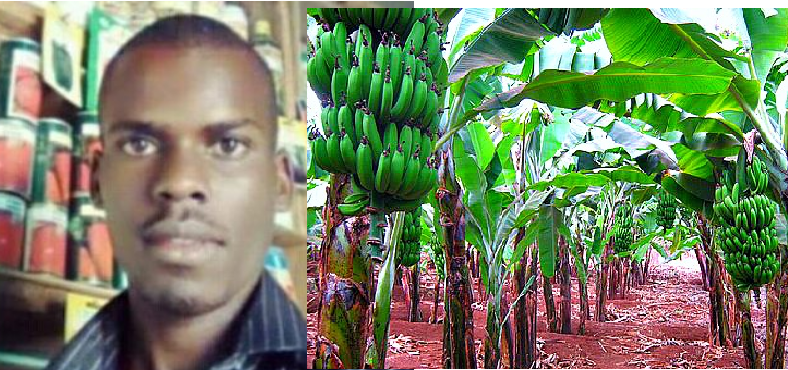By Joseph Mugenyi
Bananas are arguably the most grown food crops in Uganda, but production has reduced in recent years due to pests that cause diseases which attack bananas.
Generally most banana diseases are controlled by similar methods. In our farmers’ guide this week, let us look at how to control and manage pests that attack bananas. In pest management, cultural control methods are recommended and chemical control is the last option because of its dangers to plants, environment and human being. Cultural control is the purposeful manipulation of the environment in such away as to render it unfavourable for pests by reducing their colonisation and reproduction. In cultural control, we look at good agriculture practices which include;
Weeding

This is the removal of unwanted plants in a garden. These compete for nutrients and sunlight with growing bananas. Weeds also act as inhabitants of some pests.
While weeding it’s advisable to use a hoe or hands, after lay them down to act as mulches which increase nutrients to the soil.

Crop Rotation
You keep changing crops to be planted on the same piece of land.
This method provides discontinuity in a pests life cycle which rotates from a host crop to non host crop.
Field Sanitation And Hygiene
This involves removal of alternate sites that the pest can use for breeding. Such sites include dry leaves and outer parts of the pseudo stem, so you do pruning and thinning respectively. Avoid using similar tools on both infected and healthy ones. Disinfect tools using formaldehyde or Jik. We also look at water management:- It’s practiced as a form of cultural control in such cases when flooding is used to supress soil pests e.g. wireworms. Here we can use irrigation.
Proper Spacing
This reduces the rate of transmission between banana plants.
Resistant Cultivars
Plant healthy and resistant varieties. An infected young banana looks healthy while planted but after some time signs appear at later stage. After flowering, below the last cluster there is a reminder locally known as ‘Enkanana’; cut it immediately the fruit has turned into bananas of moderate size because it provides media for disease transmission by pollinators like bees. (Valium)
Lastly We Look At Chemical Control
Here we use insecticides, pesticides, fungicides and herbicides with low glyphosate. While spraying avoid direct contact of the chemicals and the banana plant.
Note The Following;
Fusarium/ Panama disease is locally known as Tadura.
It originated from panama in South America. Banana bacterial wilt is locally known as Kihotoka, originated from Ethiopia. These two are like AIDS for bananas, they can’t be fully cured whoever much you use all the above control methods. When conditions worsen, uproot all infected plants, burn them at a distance away from the healthy ones. Don’t replant bananas in the infected soils for at least 2-3years. Advise your neighbours to cut and uproot infected bananas when you see signs of infection; you can also help them in cutting so that you are also safe.
Insect Pests That Attack Bananas:
Now let’s look at soil insect pests that attack bananas.
Grubs
It’s the immature stage of scrap beetles that are hatched in the soil. They mostly attack roots.
Signs after damage are; Wilting due to root damage, Yellowing of leaves, Toppling due to lack of support.
Burrowing Nematodes
These are the most common pests in bananas. They spend most of their adult life in banana roots and corn tissue. After entering the roots they feed on the cytoplasm of nearby cells, as such destroying them.
Symptoms of the attack include; Reddish brown lesions throughout the cortex, Roots blacken and die, Exposed Roots, Leaf yellowing, Stunted Plant growth
Termites
They feed on cellulose in the roots of seedlings.
Symptoms of attack include; The leaves get dry and seedlings can easily be pulled out. In the later stage the whole seedlings wither.








